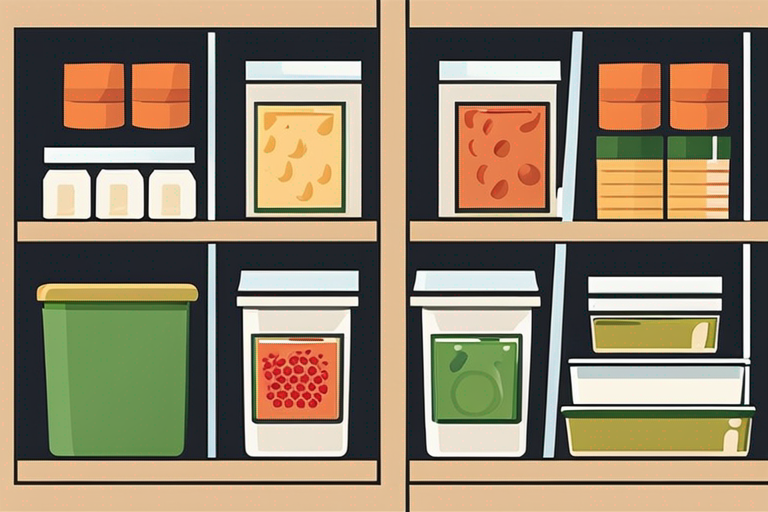
Stamp Out Hunger: A Guide to Food Safety and Storage
Get Your Free Food Safety Cheat Sheet
30 most common foods with instant answers. Print it and stick it on your fridge—completely free!
Stamp Out Hunger: A Guide to Food Safety and Storage
In the fight against hunger, ensuring that all food donations are safe and properly stored is crucial. Food safety is not only important for the health of those in need but also for the reputation of organizations and individuals donating food. This guide will provide valuable information on how to properly handle, store, and donate food to stamp out hunger effectively.
Why Food Safety Matters in the Fight Against Hunger
Food safety is a critical aspect of addressing hunger because:
- Public Health Impact: Unsafe food can lead to foodborne illnesses, which can be particularly harmful to vulnerable populations.
- Legal Compliance: Following food safety regulations is essential to avoid legal implications for organizations and individuals donating food.
- Trust and Reputation: Ensuring food safety helps build trust with recipients and donors, enhancing the reputation of food donation efforts.
Food Safety Guidelines for Donations
When donating food to combat hunger, it is essential to follow these guidelines to ensure the safety of the food being distributed:
- Check Expiration Dates: Ensure that all donated food items are within their expiration dates.
- Proper Handling: Maintain proper hygiene practices when handling food items.
- Temperature Control: Keep perishable items refrigerated or frozen until donation to prevent spoilage.
- Packaging: Use clean and secure packaging to protect food during transportation.
- Communication: Clearly label food items with allergen information and storage instructions.
Safe Food Storage Practices
Proper food storage is key to maintaining the quality and safety of donated food items. Here are some essential tips for safe food storage:
Refrigeration Tips
- Keep the refrigerator temperature at or below 40°F (4°C).
- Store raw meat, poultry, and seafood on the bottom shelf to prevent cross-contamination.
- Use a refrigerator thermometer to monitor temperature regularly.
Freezing Guidelines
- Freeze perishable items promptly to maintain freshness.
- Use airtight containers or freezer bags to prevent freezer burn.
- Label items with the date of freezing for easy identification.
Dry Storage
- Store dry goods in a cool, dry place away from direct sunlight.
- Use airtight containers to protect against pests and moisture.
- Rotate food items regularly to prevent spoilage.
Food Donation Best Practices
Donating food to those in need is a noble act, but it is essential to do so responsibly. Follow these best practices when donating food:
- Partner with Established Organizations: Collaborate with reputable food banks or shelters to ensure proper distribution.
- Communicate with Recipients: Understand the dietary needs and preferences of the recipients to provide suitable food items.
- Transportation Safety: Use insulated containers or coolers when transporting perishable items to maintain proper temperatures.
- Documentation: Keep records of donated food items for accountability and tracking purposes.
Conclusion
In the fight against hunger, food safety plays a crucial role in ensuring that all donations reach those in need in a safe and healthy condition. By following proper food safety guidelines, implementing safe storage practices, and adhering to food donation best practices, individuals and organizations can make a significant impact in stamping out hunger while upholding the highest standards of food safety. Let's work together to ensure that no one goes hungry due to unsafe food practices.

Authoritative Food Safety References
These agencies and university labs inform every tip and health precaution we publish.
USDA FoodKeeper – Cold Storage Guidelines
Official refrigerator, freezer, and pantry timelines maintained by the U.S. Department of Agriculture.
Visit USDA FoodKeeperFDA Produce Safety Rule & Grower Guidance
Field-to-fridge handling practices that prevent contamination of fruits, vegetables, and leafy greens.
Visit FDA Produce SafetyCDC Foodborne Illness Prevention Hub
Surveillance-backed guidance on pathogens, symptoms, and steps to reduce foodborne illness risk.
Visit CDC Food SafetyUC Davis Postharvest Technology Center
University research detailing optimal storage atmospheres for produce after harvest.
Visit UC Davis PostharvestPenn State Extension – Home Food Preservation & Safety
Peer-reviewed extension bulletins on safe canning, chilling, and reheating practices.
Visit Penn State ExtensionWhat is the best way to store leftovers to prevent foodborne illness?
How can I tell if my refrigerator is the right temperature for food safety?
Is it safe to eat food that has been left out overnight?
How can I prevent cross-contamination in my kitchen?
Get Your Free Food Safety Cheat Sheet
30 most common foods with instant answers. Print it and stick it on your fridge—completely free! Want more? Upgrade to the complete guide with 70+ foods.
Scan your food directly and get instant safety info using our AI-powered camera feature.